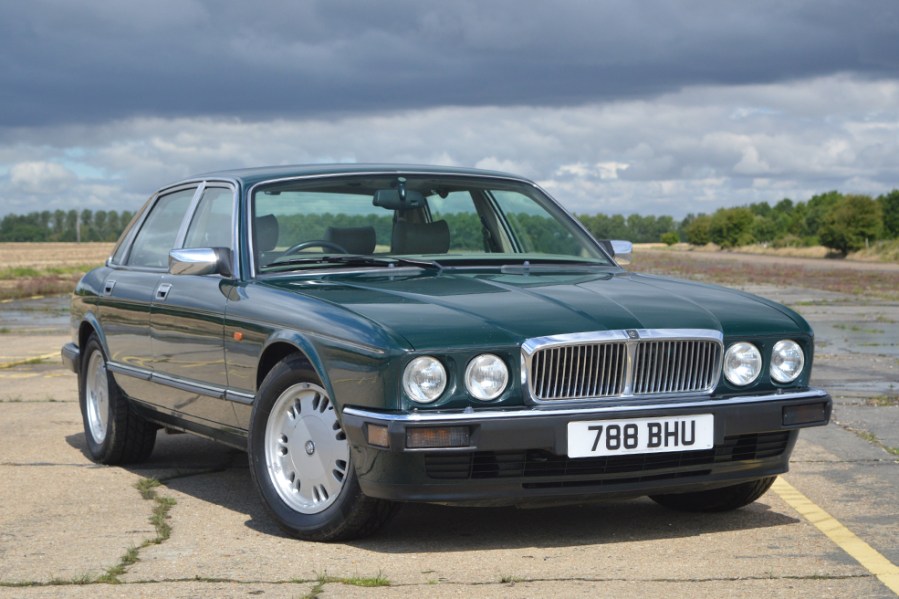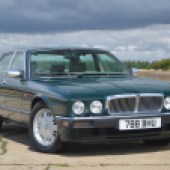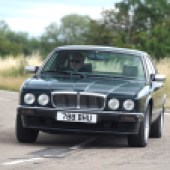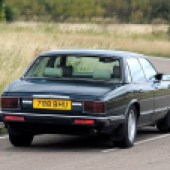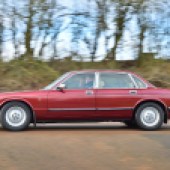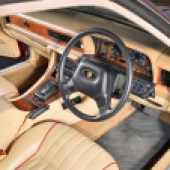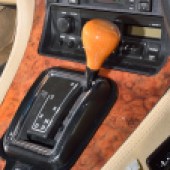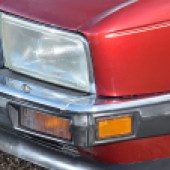Tasked with replacing the long-running ‘Series’ XJ in 1986 was the model codenamed XJ40, a luxury saloon that now’s a tempting classic choice
Few Jaguar models have been so comprehensively swept under the carpet as the XJ40. Only just emerging from its lengthy tenure in that twilight zone between cheap old prestige smoker and modern classic, the XJ40 represents more Jaguar per pound than it’s ever been possible to buy. But it also potentially represents more trouble per pound than you’d ever want to buy.
The main difficulties facing the XJ40 are simply that its predecessor, the Series 3, was so very good and so well-loved that it continued in V12 form as a special order until 1992. At the other end of its lifespan, the XJ40’s successor – the X300 – was so capable that many are still in daily use. Quality problems with early XJ40s didn’t help its reputation, although these were rapidly acted upon, and by the middle of its life the XJ40 had largely come good. Indeed, the X300 was essentially a heavily facelifted XJ40, proving the worth of the underlying design.
Almost unbelievably, development of the car that would replace the original XJ began just a few years after the launch of the original; but despite plans being laid in the early ’70s, the newcomer was destined not to emerge until 1986. Part of the reason as ever was the tangled finances of BL at the time, with development effectively put on hold until the late ’70s. The work of Pininfarina in freshening up the styling of the Series 2 to create the elegant Series 3 also removed some of the urgency to develop a replacement.
After evolving from what was originally a rather stark straight-edged concept into a more Jaguar style, the XJ40 received the green light for production in 1980, the BL board signing off an expenditure of £77 million apparently in the belief that this would buy the group re-entry into the US market.
The launch date was set for 1984 and to go with the new styling were chassis and engine revisions. The Series 3 was still relying on the XK engine originally developed in the 1940s, which meant the new AJ6 would be only the third new engine in Jaguar’s history. The newcomer’s ‘chassis’ took all that was good about earlier XJs and refined it further, notably moving from the tricky-to-service inboard rear brakes to a more conventional outboard installation. The rear suspension was also revised to allow the rear wheels to move backwards very slightly under compression, which improved the ride quality.
That 1984 launch date proved over-ambitious and the XJ40 was finally unveiled in 1986. At launch, the car was offered with a 2.9-litre single-cam 12-valve AJ6 engine (using a single V12 cylinder head) and a twin-cam 24-valve 3.6. The greater efficiency of the newer engines permitted a reduction in capacity which also allowed Jaguar to offer a car in the sub-3.0-litre class, which was becoming more popular thanks to taxation and fuel costs.
The 2.9 was no ball of fire – especially in automatic form – but at £17,200 with cloth seats and manual ’box, it rather neatly undercut the top-end Rover 800s. And remember, by this time Jaguar and Rover were no longer in-house rivals, the former having become independent from BL in 1984.
The new car was well received by the press and in purely technical terms it was an improvement over its predecessor in pretty much all areas, with the ride and handling especially praised. The honeymoon was short-lived though, with quality issues soon becoming obvious on the early cars. It was bad news for Jaguar, but luckily its acquisition by Ford in November 1989 provided the funds to update production facilities and improve things. Meanwhile, the AJ6 engines were updated, with a 4-0-litre replacing the 3.6 in 1989.
In 1993, the long-delayed 6.0-litre V12 version of the XJ40 was announced, the bodyshell having been revised the previous year to allow it to fit. The £35 million programme, which involved 140 new panels, wasn’t purely for the small number of V12 cars that would be sold, though: it was intended to reduce the number of separate components to increase refinement, rigidity and production efficiency. Improvements elsewhere included revised door trims, plus the introduction of two new models: the 3.2 S and 4.0 S with five-spoke alloys and lower suspension.
All this set the scene for the XJ40’s own replacement; in 1994 the final example left the production line.
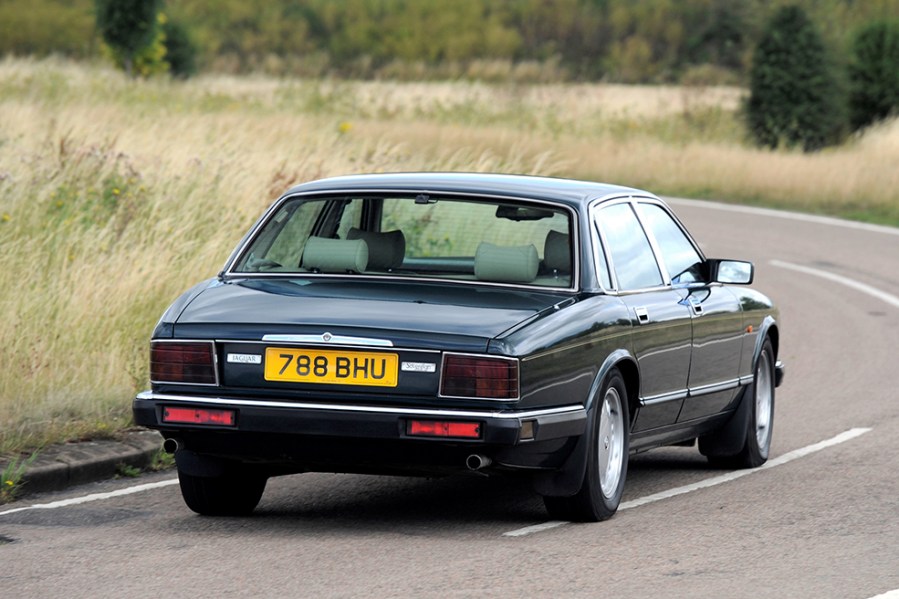
Bodywork
The rule here is the later the car, the better. Although it’s far more robust than the Series 1-3 cars, rot can kill an XJ40 – and has been responsible for the demise of most.
When it comes to structural issues, problem areas include the front subframe (where the upper wishbones mount), front bulkhead and around the suspension turrets; we’ve seen poorly maintained cars with major rot here, which effectively makes any regular example a ‘spares or repair’ case. You also need to check the outer sills – even if all you see is some bubbling paintwork, you can be sure it’s rot that’s worked its way through from the inside, with what’s beneath being far worse than what you can actually see. The inner sills are just as vulnerable but are more difficult to inspect properly, although getting underneath with a torch should give you a fair idea of their overall state.
Cosmetic rust isn’t as much of a problem in terms of MoT failure but will look unsightly, which in turn will affect the car’s value. You need to check all four doors (particularly along their bottom sections) for rot and bubbling paintwork, as well as the rear wheelarches and front wings. The rear quarter panel (above the wrap-around bumper) can also rot through in extreme cases, as can the front screen surround (particularly the lower corners). You should also check the radiator support, although this is a bolt-on item that’s easy to replace.

Engine and transmission
The AJ6 engines are well regarded and have proved themselves to be tough and reliable as long as they’re maintained. A growling rattle from the front of the engine on start-up can be the timing chain tensioner, which can be sorted by swapping to the later design. Listen to the engine with the bonnet open to gauge any odd noises, since there’s an awful lot of sound deadening under it.
Head gaskets have been known to fail – it’s by no means common, but worth checking for oil in the water and sludge in the oil cap. The 3.6 often weeps oil from the front corner of the head near the distributor but it’s relatively common and no cause for alarm.
If the air conditioning isn’t working, don’t be fooled by a seller telling you it just needs a “re-gas”. After all, that gas must have disappeared somewhere.
Most XJ40s came with the ZF four-speed automatic, which was a no-cost option over the standard five-speed manual. As ever, check the state of the fluid – black and burned smelling is bad news – and check that it engages Drive smartly and changes smoothly. If the lever can’t be shifted from the Park position, it’s likely to be a problem with the safety interlock or simply the brake light switch at the pedal.
The diff can get noisy at the rear from 100,000 miles or so, but will generally get no worse and can carry on quite happily. What can be more of an issue is the output oil seal at the propshaft. The Getrag manual is a rare sight, but a manual 4.0-litre car is quite an interesting proposition if you should come across one.
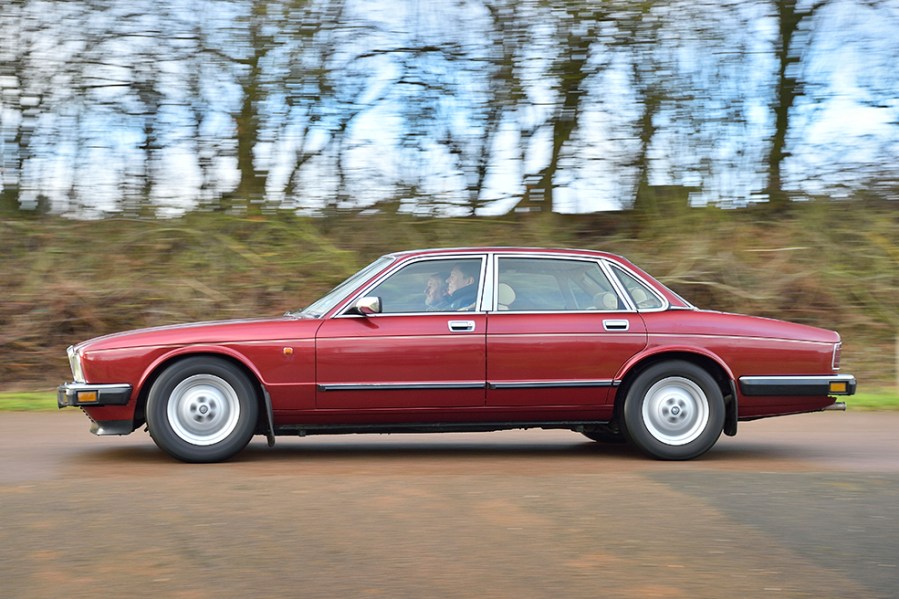
Suspension, steering and brakes
Early cars featured an optional hydraulic self-levelling system on the rear, which can fail and cause the rear end to bounce alarmingly. It’s expensive to fix, so many cars will have been converted to conventional springs and dampers. Indeed, Jaguar even recommended converting the car to springs and disabling the hydraulics, offering a retro-fit kit for the purpose. If going down this route, make sure you replace the springs as well as the dampers, since the self-levelling system used shorter springs.
The XJ40’s surprisingly capable chassis means these cars can often get driven hard, which inevitably takes its toll on the suspension bushes. Failing front wishbone bushes and rear A-frame bushes can make the handling feel vague but are a straightforward DIY fix.
These are big, heavy cars and do get through the discs and pads quickly when they’re driven hard. Replacements are around £150 for an axle set of discs and pads. The XJ40 did see the tricky inboard rear brakes moved to a conventional outboard position though, which makes things easier.
If the ABS or brake warning light stays on for longer than it should, then suspect a problem with the Citroën-style pressure accumulator, which provides the power assistance for the brakes instead of a conventional vacuum servo. The system can bring up the low pressure warning on the dashboard when it gets leaky; it’s a relatively common mod to convert it to a conventional vacuum servo.
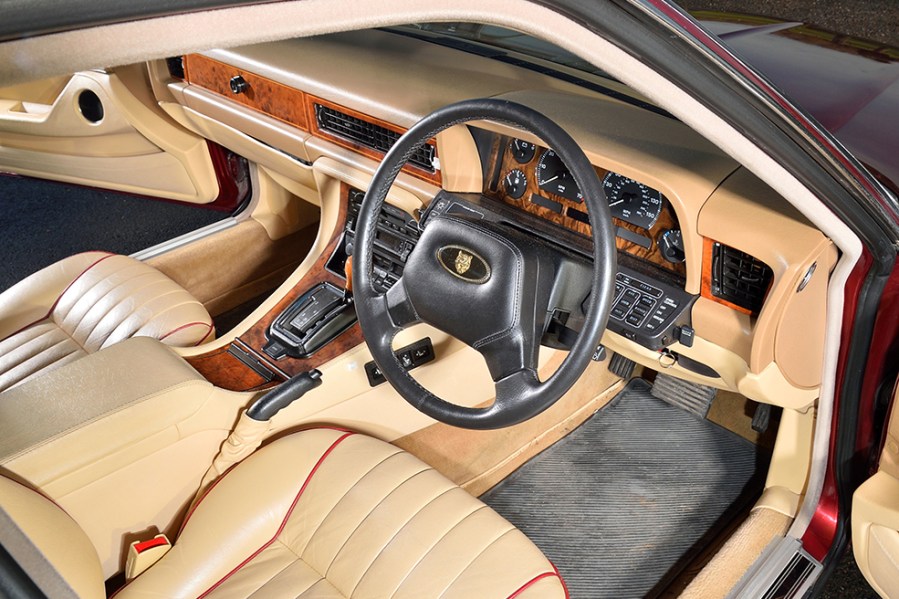
Interior, trim and electrics
Again, the later the better, since the electrics on early cars proved to be troublesome and were refined a couple of years into production. In particular, the semi-digital dash with bar graph for minor instruments was replaced by conventional dials for the 1990 model year. The XJ40 pioneered a new level of electrical complexity for Jaguar, using separate control modules spread around the car but today it can be straightforward to troubleshoot faults by substituting used modules. Basically, check all the switches and control panels to find out what does or doesn’t work.
Door lock solenoids can also fail, often meaning the car can’t be locked but replacement is simple enough for the DIY owner. On pre-1990 cars, the design of the exterior door handles means they can be broken off by the heavy-handed.
Interior trim tends to be hard-wearing, although the leather upholstery can crack and split with age. Unless it’s particularly bad, you should be able to improve the appearance via a leather restoration or re-colouring kit. Drooping headlining can also be an issue, but there are independent Jaguar specialists that offer a supply-and-fit replacement service.
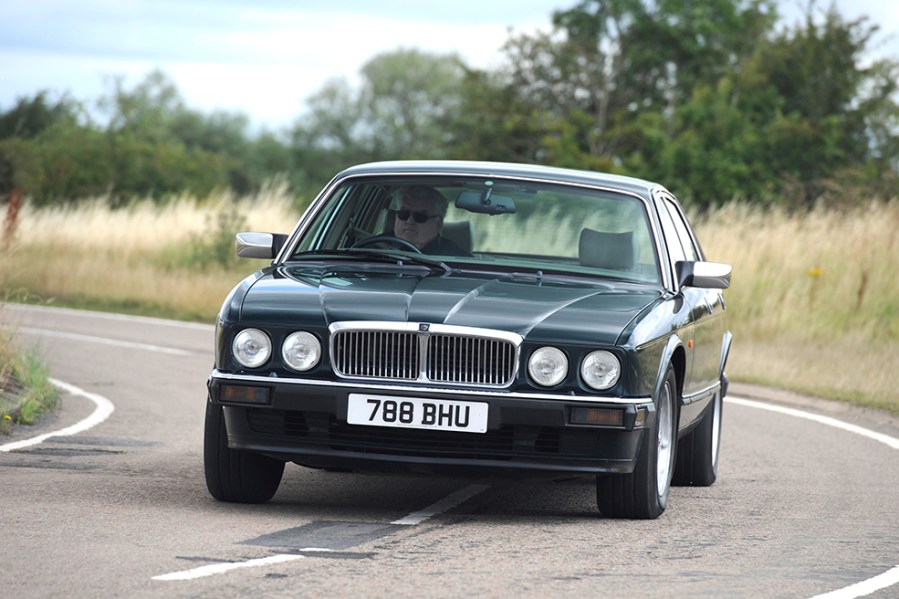
Jaguar XJ40: our verdict
Today, the mildly scruffy XJ40s all seem to have disappeared, leaving the market split between the few absolute disasters still clinging to an MoT and those cherished examples that have survived thanks to their owners’ enthusiasm for what is a superb cruiser offering all the traditional XJ values. Find one of these latter examples and you could be onto a winner.
Values of the XJ40 are all over the place, with a massive gulf between the cheapest and the best. You might be able to pick up a car from around £2000–2500, although at that price it’s likely to be a rolling project suffering from common XJ40 issues, ideal for someone with the enthusiasm and patience to improve it. Move up to the £5000 level and you’ll find the cared-for cars from keen owners, many of them surprisingly presentable.
The very best examples will be the 1993-1994 models; even here you’re looking at around £10,000 for the best V12-engined examples. Although values have risen in recent years, there’s still lots of car for the cash on offer here.

